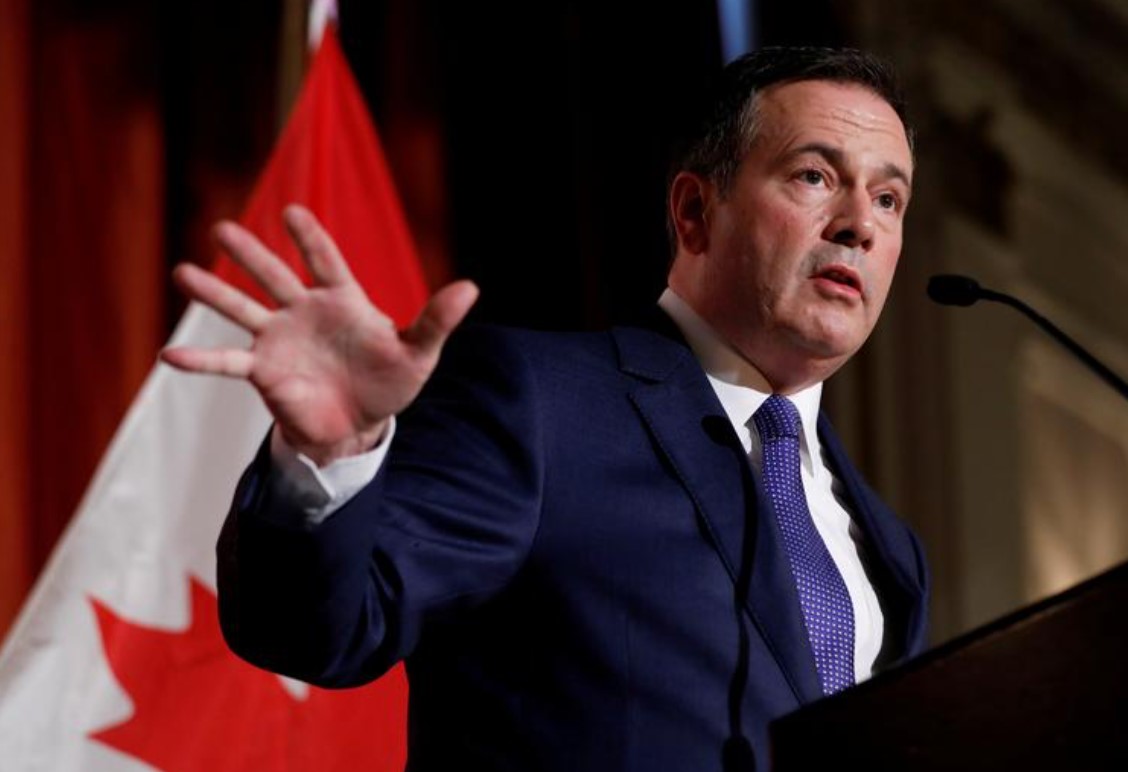
Alberta Premier Jason Kenney speaks at an event in Ottawa, Ontario, on December 9, 2019 in a file photo. (REUTERS/Blair Gable)
By
Alberta Premier Jason Kenney said the province is ready to move on to the next phase of its reopening plan on March 1, as the numbers of COVID-19 transmissions and hospitalizations “continue to decline rapidly.”
“With these promising trends, we are in a position to safely move to Step 2 of our path back to normal and remove the vast majority of remaining public health measures in Alberta,” Kenney announced during the opening ceremony of the Grande Prairie Regional Hospital in northwestern Alberta on Feb. 26.
“All signs here and across the world suggests that the worst of COVID-19 is behind us. The pressure on our health-care system is easing as hospitalizations due to COVID-19 are declining,” he noted.
Starting on March 1, the province will end all mandatory public masking requirements except in high-risk settings, which include public transit, Alberta Health Services-operated and -contracted facilities like hospitals, and continuing care settings.
The province will also lift capacity limits for all venues. In addition, restrictions on interactive activities, liquor service, and operating hours for bars, restaurants, and other hospitality venues will be removed.
According to the Alberta government website, other measures to be updated in Step 2 of the reopening plan also include:
- removing any remaining school requirements, such as kindergarten to Grade 6 cohorting;
- removing youth screening activities for entertainment and sport activities;
- lifting capacity limits on all large venues and entertainment venues;
- lifting indoor and outdoor social gathering limits; and
- lifting mandatory work-from-home requirements.
“I know there are some who greet the lifting of restrictions with some mixed emotions. But I want to remind you, Alberta is not alone in this approach. In fact, places around the world and across Canada have begun their transition to the endemic state and have lifted measures as their Omicron wave subsides,” Kenney said.
He noted that a number of countries and regions—including England, Ireland, Scandinavia, South Africa, and many U.S. states—that got hit by the Omicron variant weeks before it hit Alberta have also lifted public health restrictions.
“Their numbers and hospitalizations around the world have continued to decline weeks after lifting restrictions, so I think we can move forward with confidence based on not only our experience here, but around the world,” Kenney said.
Alberta had already lifted its COVID-19 proof of vaccination program effective Feb. 9, while children under the age of 12 were no longer required to wear masks starting Feb. 14. The province had also said on Feb. 8 that other public health rules will be phased out in another three weeks as long as the numbers continue to decline.
When Alberta moves to Step 3 of the reopening plan, COVID-19 specific measures for continuing care settings will be further removed, and isolation for individuals who test positive will become a recommendation rather than a requirement, according to a news release issued on Feb. 8.
No specific date was given for Step 3, only that it will be determined “based on hospitalization rates continuing to trend downwards.”
On Feb. 26, the City of Calgary issued a statement saying that its bylaw for mandatory masking will “end automatically” once the province removes its requirement for indoor masking on March 1.
Before then, the city said Calgarians over 12 years old would still be required to wear masks in indoor public spaces and public vehicles.
“We are cautiously optimistic that we are entering a new stage of the pandemic,” said Susan Henry, chief of the Calgary Emergency Management Agency.
“Some of us will welcome the lifting of restrictions while others will prefer to continue wearing face coverings and following other precautions,” she added. “We must be kind and compassionate toward one another, respect those personal choices, and make space for everyone to move at the speed they feel comfortable with.”